Running is a great form of exercise and a good way to keep our heart and lungs in good condition as we age. But it can impact on the joints and even cause injuries if you’re not careful. One of the best ways to prevent any problems is to learn what stretches to do before running.
Prior to exercise, our muscles will be in a rested state, but as we run, they will fill with blood pumped from the heart. The muscle fibres will be placed under strain and if we’re not properly warmed up, injuries can occur. There are many advantages to doing stretches before running, here are just a few:
-
Raises the heart rate – going from static state to high energy in an instant can make us feel unwell as the body struggles to cope. Warming up with some dynamic stretching gently raises the heart rate to prepare us for exercise.
-
Increases performance - We might not be trying to break Usain Bolt’s record, but stretching before running can make us run quicker, according to a 2020 study. This is likely because of the increased blood flow to the muscles before you start running.
-
Increases blood flow – Stretches before running provides our muscles with more oxygen via increased blood flow (because the heart rate rises), meaning they can function better.
-
Reduces the risk of injury – Making sure the body is properly prepared for running can minimise the risk of sustaining injury. As we age, it’s even more important to make sure we don’t run with tight muscles. Flexibility, obtained through regular stretching, is key.
-
Improves range of motion – Stretching aids flexibility, something that can decrease as we get older. While stretches before running are important, so is keeping that flexibility by incorporating a mobility routine into your weekly exercise plan or trying a gently restorative form of exercise like yoga or Pilates.
We spoke to Rowan Clift, Training Specialist at AI-based fitness and lifestyle coaching app Freeletics, to find out the best stretches to do before running and why it’s so important.
Why stretching before running is important
“Regardless of the distance or kind of run you participate in, stretching is essential for runners,” Rowan tells us. “All levels of runners should allow enough space for a stretch before a run as it helps to prevent injuries and enhance the quality of the run and exercise. Stretching also helps by increasing your blood flow and range of motion, which can help any kind of exercise, not just running.”
How long should you spend stretching before running?
It’s not a good idea to go running without stretching first, as the muscles need to be warm. This applies no matter how warm the weather is, too!
“I would recommend a good round of stretches with a solid dynamic warm-up before you run, for at least 5 minutes,” Rowan says. “This is made up of smooth motions that either emulate or support the running gait. If you compare your muscles to a piece of chewing gum, they will benefit from dynamic warm-ups before stretching and can increase the overall effectiveness of the stretch. Without mastication, the gum is easily broken, but after it has been chewed, it becomes soft and flexible.”
Examples of stretches that emulate running include lunges, hamstring stretches, quad stretches and hip stretches.
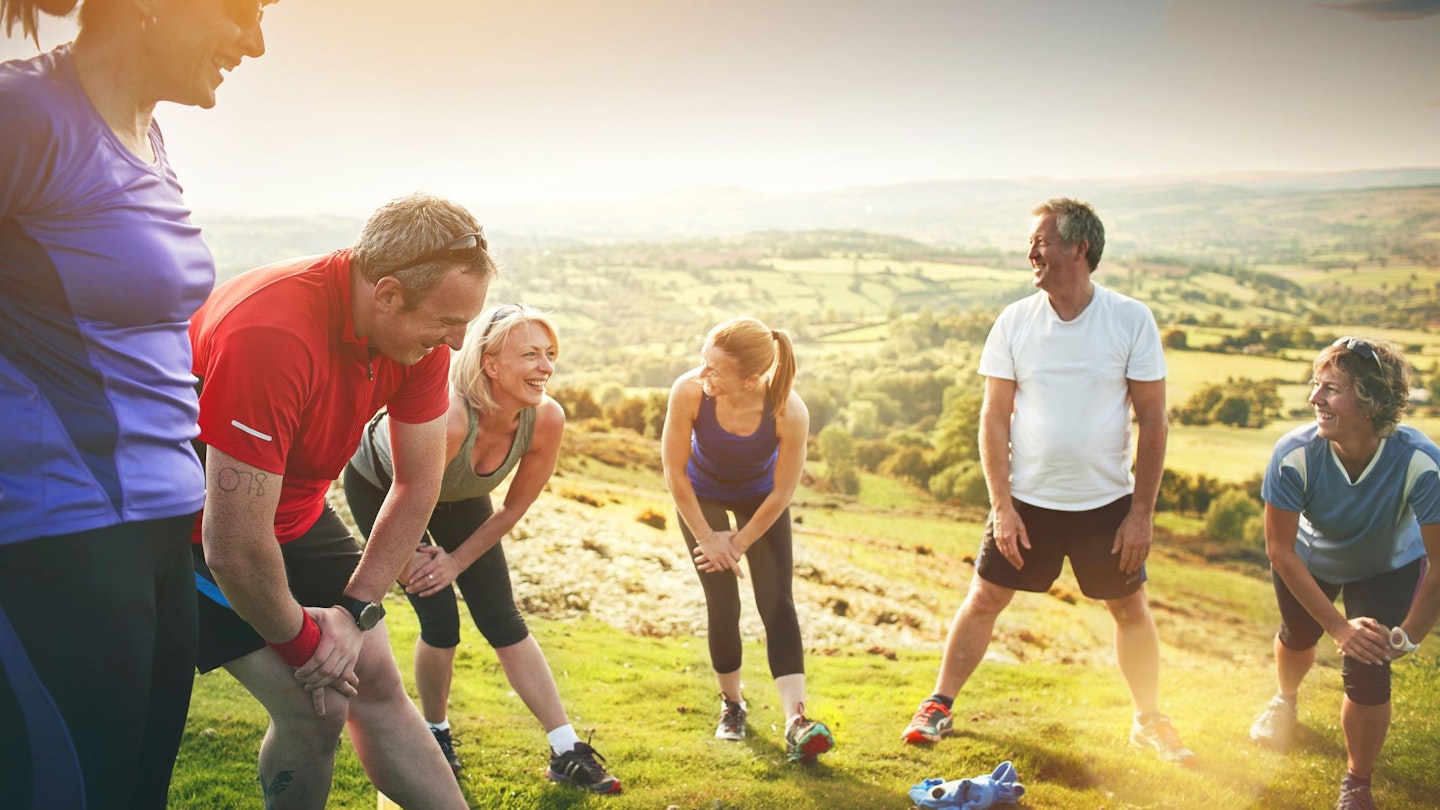
Do you need to stretch after running?
Stretching after running is equally as important, as you don’t want your muscles to contract and seize up. Rowan tells us: “I would recommend cooling down after a run for at least 20 minutes, including both stretches and low-intensity aerobic movement, like walking at a slow pace.
This will help decrease your blood pressure and heart rate. Additionally, stretching for an extended period of time can help reap the benefits of stretching, especially as we age, and our tissues become less elastic.
The length and intensity of a run should be reflected in the stretches that follow. In other words, your stretches should be right for the distance you have completed — for example, a half marathon or a full marathon, 20 minutes might not be enough.
5 Stretches to do before running
Rowan recommends the following stretches to do before running. If you have any issues getting down to the floor you can try the lying hamstring stretch as a standing stretch instead, and the downward dog can be done with hands on a slightly raised surface such as a small step-stool. As well as adding these stretches into your routine, you might like to try some knee-strengthening exercises, or a simple mobility routine. You won't need any equipment for the stretches below, but you might like to use an exercise mat for comfort. I always stretch barefoot so I can feel the floor, but if you're doing these outside, some good running trainers are essential.
Lying hamstring stretch
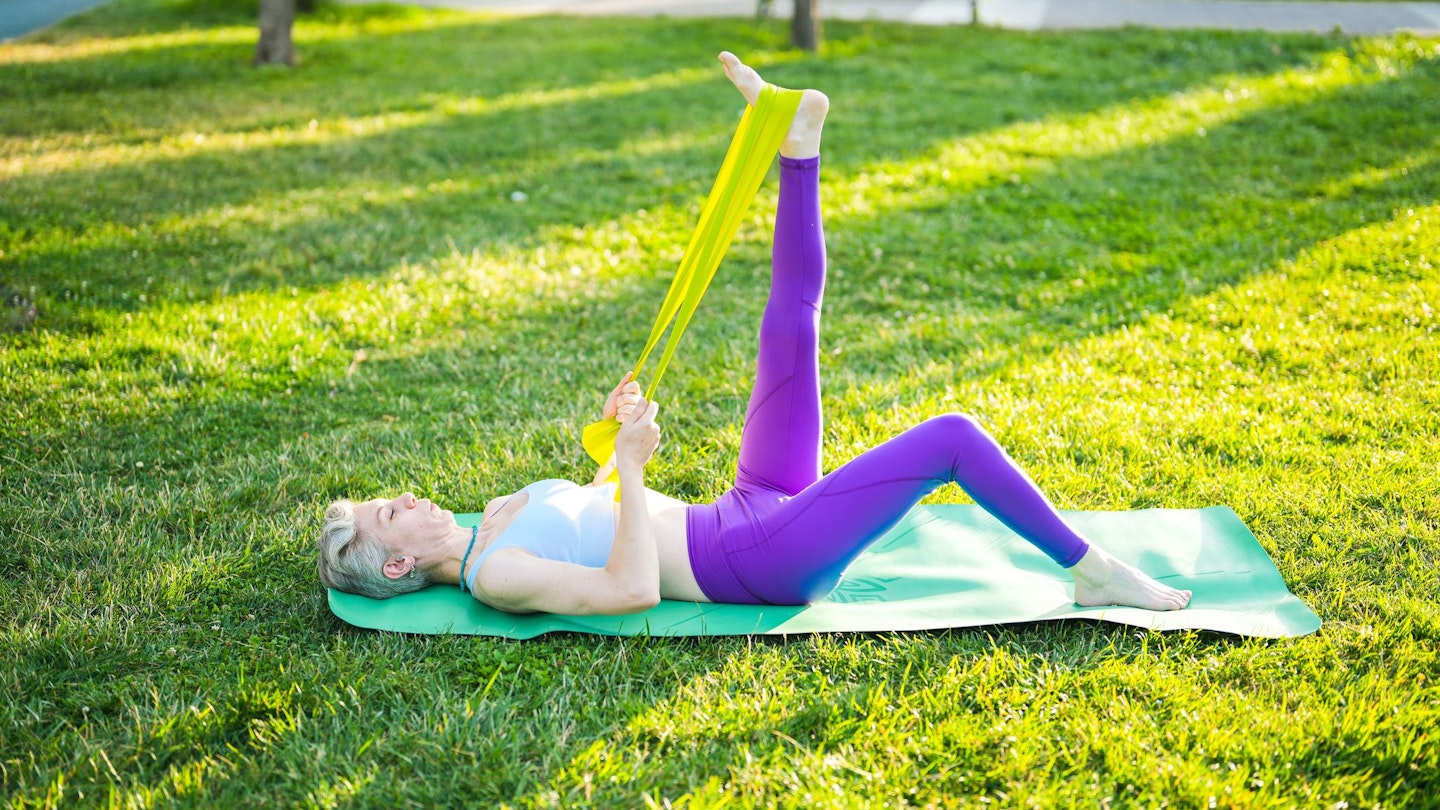
-
Lying on your back, lift one leg up, foot flexed (not pointed).
-
Hold your leg either behind the thigh, calf, or at the ankle if you’re flexible enough, and pull it towards you.
-
You can use a long resistance band to do this too, wrapping it around your foot.
-
Hold the stretch for 10 seconds, then ease off.
-
Take a deep breath and, as you exhale, pull the leg in again. Hold for 20-30 seconds then release.
-
Switch sides.
To do this standing up, stretch he leg out in front of you, on the heel, and sit back into the stretch. Lean on your bent leg, not the leg that’s being stretched.
Standing quad stretch

-
Holding onto a solid surface if needed, pull one leg up behind you.
-
Grab onto your leg either around the ankle, or by holding the back of your trainer.
-
Pull your leg up behind you, pushing your hips forward, and hold for 15 seconds.
-
Switch sides.
Downward facing dog
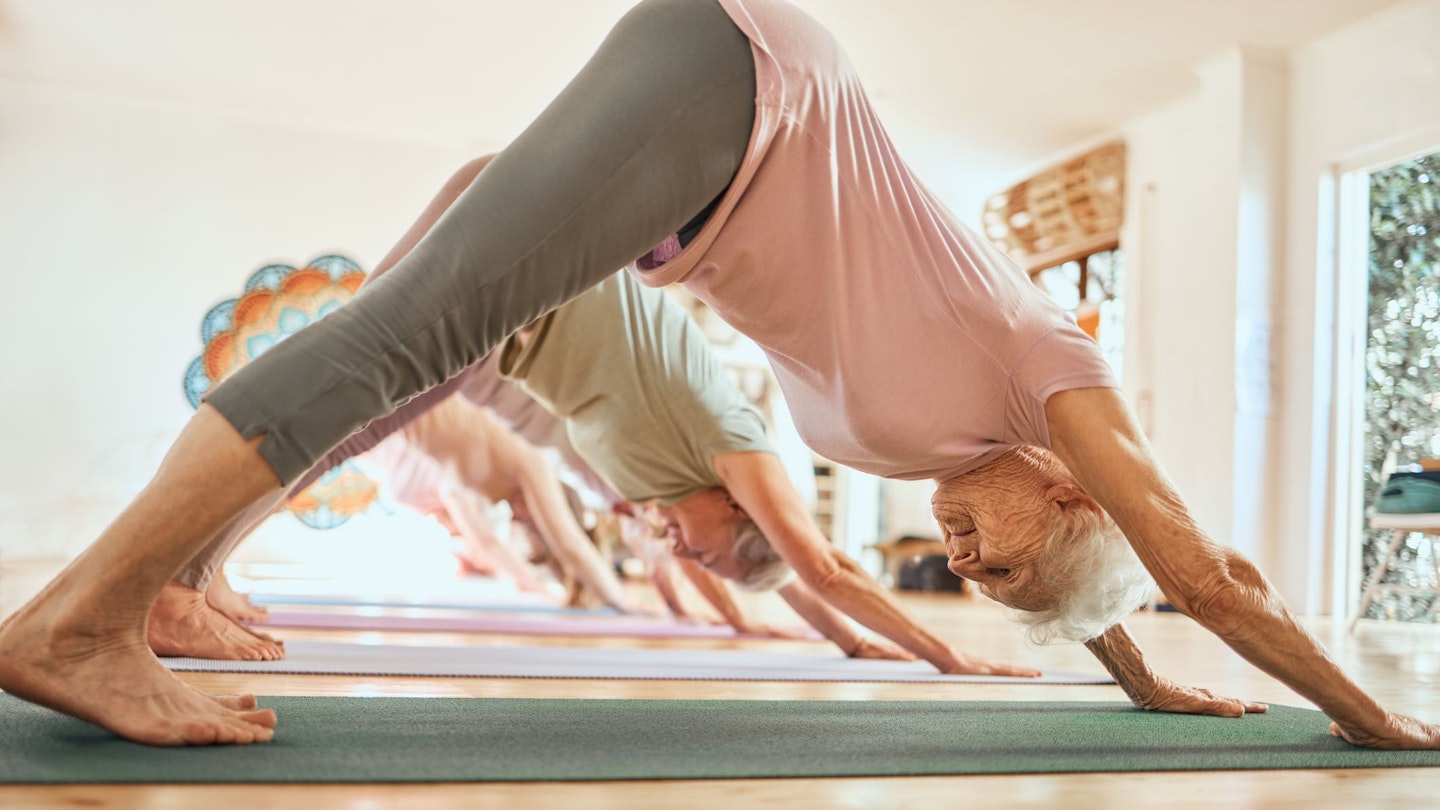
-
Start lying on the floor, face down, with your hands either side of your chest.
-
Curl your toes, push into your hands and drive your hips up towards the ceiling.
-
Looking between your shoulders to your toes, drive your hips backwards, aiming to get your feet flat to the floor.
-
Hold for ten seconds then ease off slightly.
-
Take a deep breath and, as you exhale, drive the hips back again. Hold for ten seconds.
Pigeon stretch
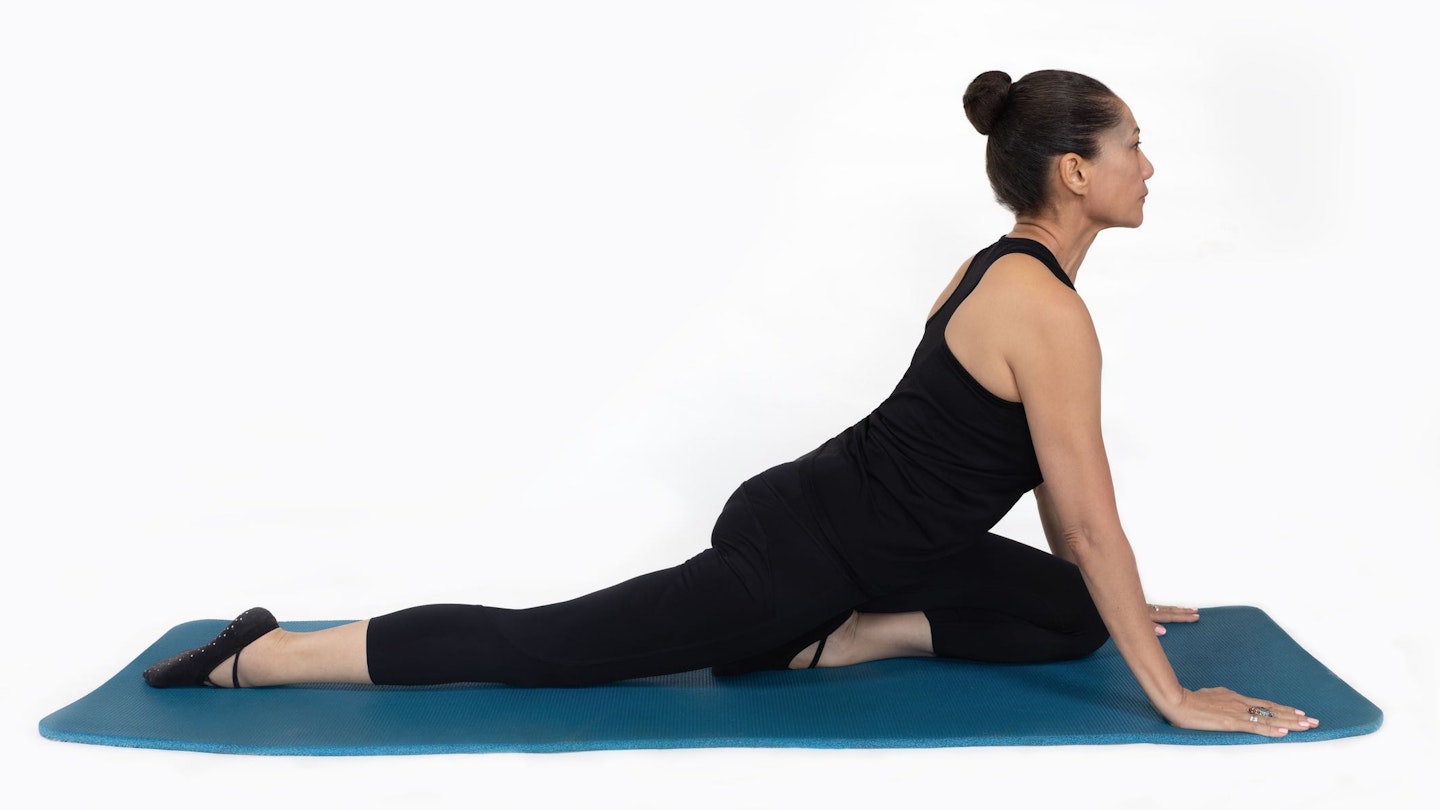
-
From your downward dog position, bend one knee and bring it forward, as if you’re going into a lunge, but rest the knee on the floor, on the outside of your hands.
-
Your front leg should now look like the number 7.
-
Let your back leg come down flat to the floor.
-
You should feel the stretch at this point but if you’re flexible enough, fold your torso forward over the front leg, bringing your arms and head towards the floor.
-
Hold for ten to twenty seconds then switch sides.
Single leg calf stretch
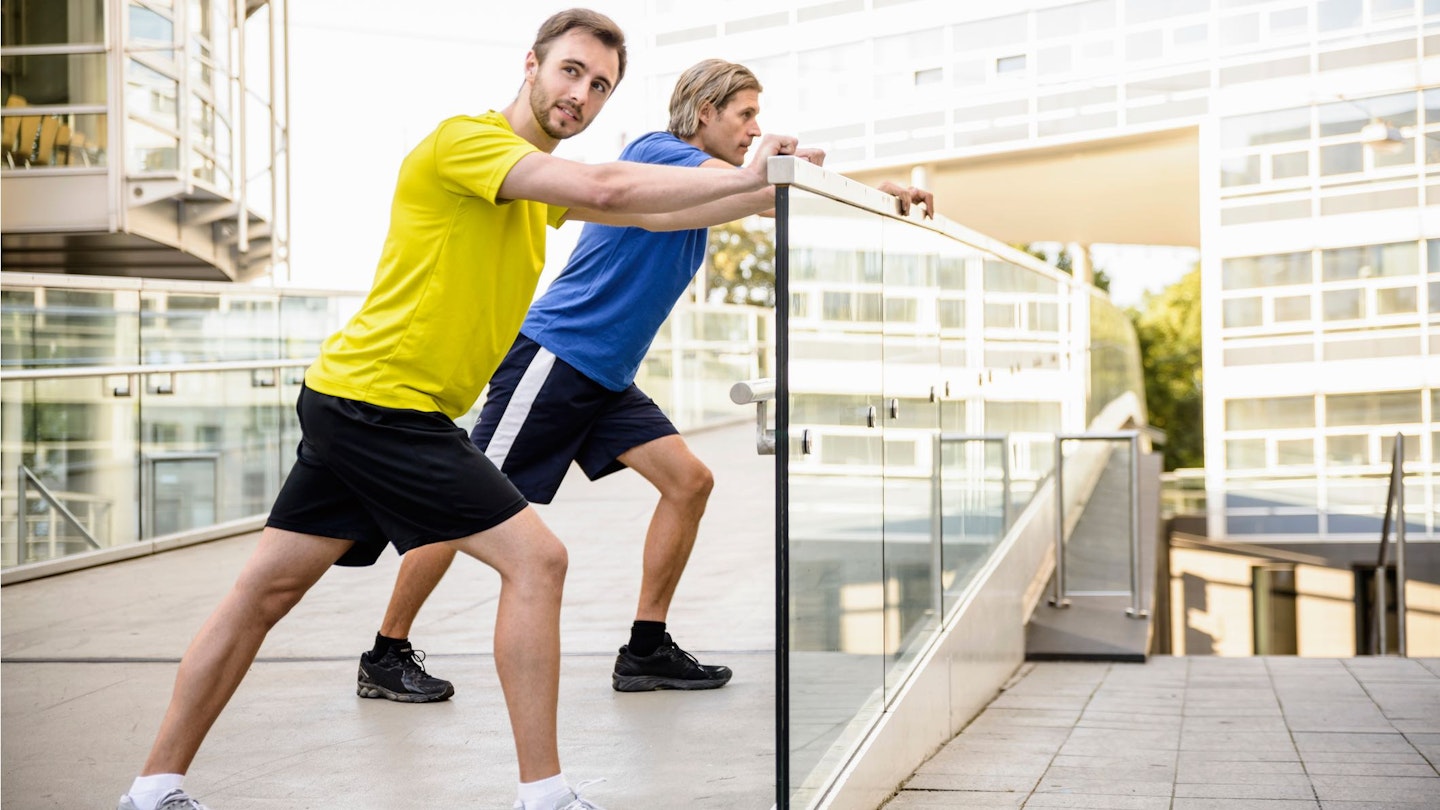
-
Stand with your hands flat against a wall and take a stride forward. The leg that is being stretched is the back one.
-
Keeping the soles of both feet flat, lunge forward towards the wall by bending the front knee, keeping the back leg straight.
-
You should feel a stretch in the calf muscle of the back leg. Hold for ten seconds then ease off slightly.
-
Take a deep breath and, as you exhale, push forward on the front leg again.
-
Hold for 20-30 seconds then switch sides.
Rowan Clift is a Training Specialist at AI-based fitness and lifestyle coaching app Freeletics.
Becky Fuller is a senior digital writer for Yours.co.uk. She is also a fully qualified personal trainer and strength coach, specialising in fitness and wellbeing for over 50s. Prior to joining Yours, Becky was a fitness writer for Saga, and a freelance entertainment and theatre journalist. Becky is passionate about helping people to move well and discover the many benefits of strength training.
